Filed under: Analysis, Capitalism, Civilization, Development, Environment, Land, US
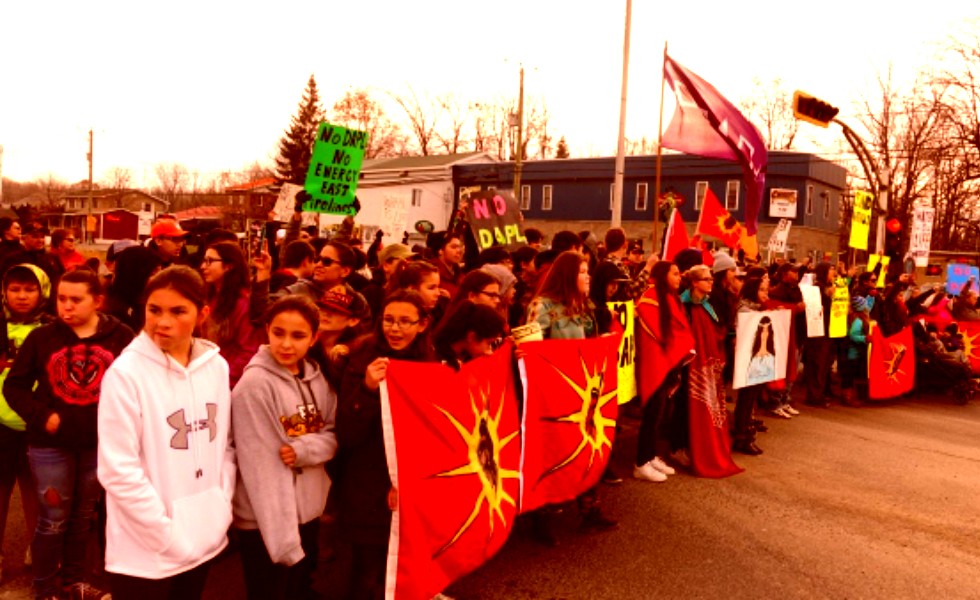
Submitted to It’s Going Down
Hundreds of demonstrations have occurred across Turtle Island to express solidarity with the Oceti Sakowin and their fight for sovereignty against the development of the Dakota Access Pipeline (DAPL). These actions expand the struggle, by de-cententering the area in which conflict can occur and help transform supportive people from afar into active participants rather than passive social media spectators. #NoDAPL solidarity has mainly consisted of rallies, marches, vigils, lockdowns at banks or intersections
In response to the siege and violent eviction of Sacred Ground, Mohawks in Kahnawake territory erected a blockade and shut down an onramp for 2 hours on Highway 132. Mercier bridge is an extremely vital commuter link providing the only access across the St. Lawerence River from the south. An estimated 30 million vehicles use the bridge every year, with about 1.4 million of them being trucks used for industrial/commercial purposes (about 4000/day).
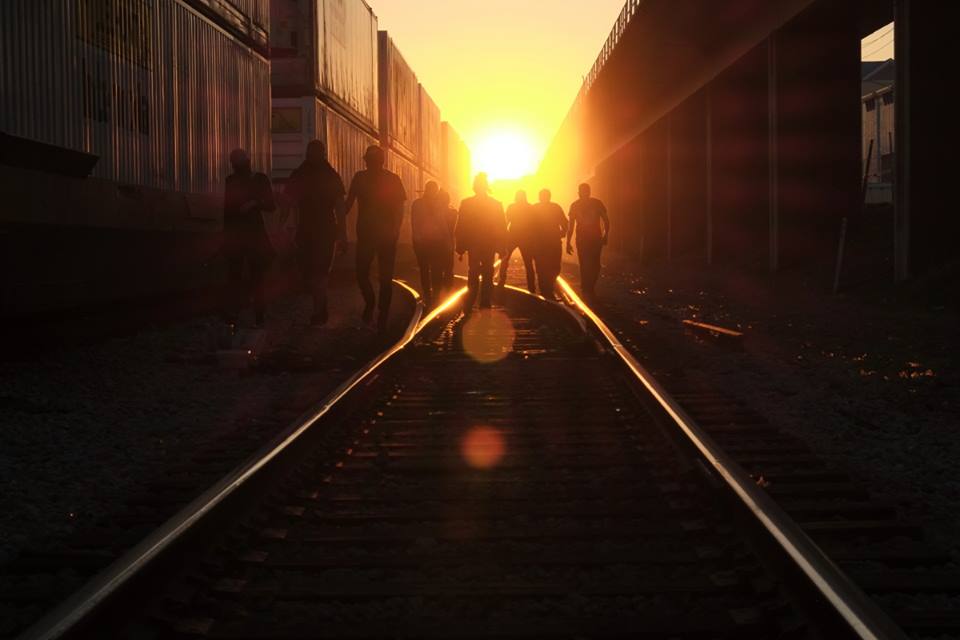
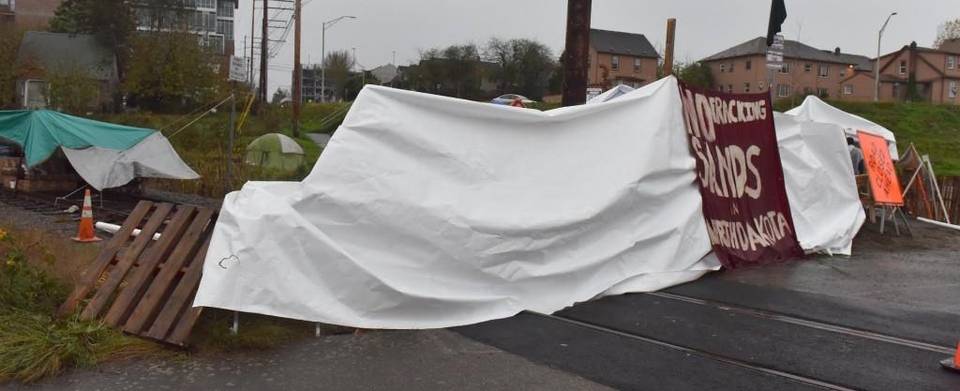
A blockade was erected along a private rail line operated by Union Pacific outside of the Port facilities, in solidarity with Oceti Sakowin. Protesters essentially halted interstate commerce for the Port and other local business customers (e.g. Mottman Business Park), including a train shipping fracking proppants bound for North Dakota’s Bakken Oil Fields (the same oil set to flow through the Dakota Access Pipeline). The blockade became an indefinite camp, staying for almost a week before being violently evicted by riot police from three different jurisdictions. Fires were set on tracks leading through downtown Olympia.
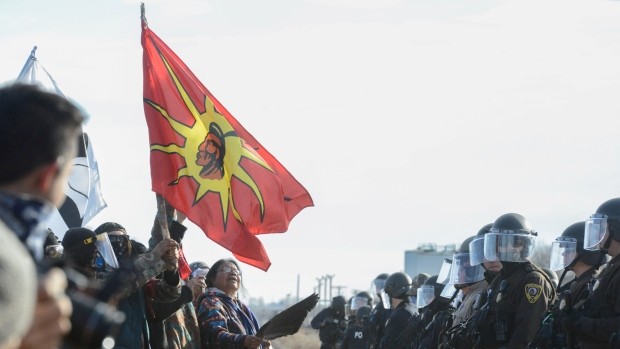
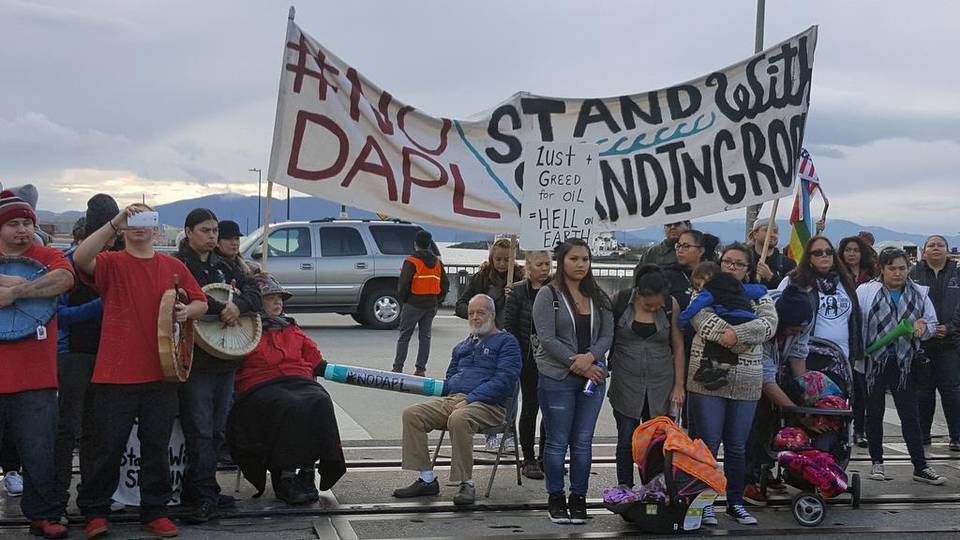

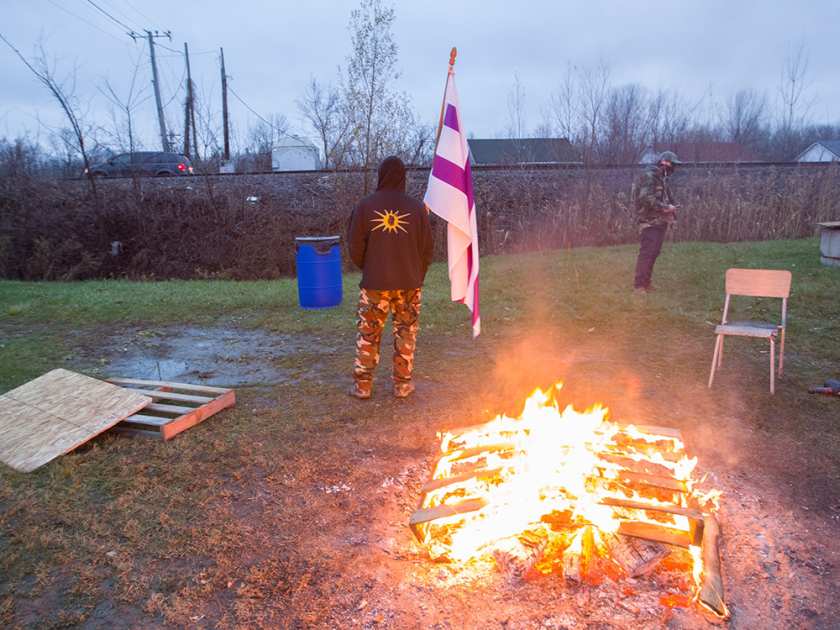
Kahnewake CP Rail Blockade, November 30, 2016
-Kahionwinehshon Phillips, Mohawk
AGAINST PIPELINES AND THE WORLD THAT PRODUCED THEM
The Dakota Access Pipeline (DAPL) is a major infrastructure project that will connect the Bakken Oil fields of North Dakota to domestic and foreign consumers. In the last ten years we have witnessed an explosion in domestic energy projects. Energy independence is a national security issue: The U.S. Govt knows it cannot rely on oil from politically unstable regions such as the Middle East. America’s dependence on imported oil as a primary source of energy proved to be a weakness that could be exploited to influence or subvert U.S. foreign policy, has disrupted the economy, and has transferred billions of dollars to foreign national treasuries hostile to U.S. global hegemony.
“At a time of such great challenge for America, no single issue is as fundamental to our future as energy. America’s dependence on oil is one of the most serious threats that our nation has faced. It bankrolls dictators, pays for nuclear proliferation, and funds both sides of our struggle against terrorism. It puts the American people at the mercy of shifting gas prices, stifles innovation and sets back our ability to compete.”—Barack Obama, January 26, 2009
Pipelines are pieces of critical infrastructure produced to satisfy the energy needs of the global capitalist world. There isn’t a way to have operating freeways, stores full of the latest electronic gadgets, military occupations of foreign countries, or Super Wal-Marts full of food grown by wage slaves in the global south without the oil infrastructure. To be against pipelines is to be against the very world we inhabit. No struggle that sets out to permanently destroy the possibility of all future pipelines imposed on this Earth can ever be successful without radically transforming the society that produces them through its energy needs.
The DAPL will cause irreparable damage to the Missouri River, which 10 million people depend on, including people from 10 states and 28 different indigenous territories. The DAPL is an insanely destructive project, but it is just one of a million examples of how land and life are commodified and how our lives are arranged and controlled through oppressive and authoritarian politics. It is emblematic of the system that promotes the insane myth that measurable economic productivity and infinite growth are the purpose of human organization and is a continuation of the colonial genocide that began over 500 years ago.
How they are developing it is similar to how our everyday lives are managed: It’s the development and hierarchicalization of space by power, it’s the constant surveillance and intimidation, the occupation of roads and neighborhoods by armed police. The world of the pipeline is in systemic racism, in social isolation, the wage system, in prison. It’s in the suicides, addictions, rapes. It’s in the explosions and massive spills. The pipeline is there in the rising tides of climate change that’s swallowing small island communities and coastal villages. It’s in the drought and forest fires that have been incinerating the forests and wildlife of Georgia and the Carolinas for seven weeks straight, and in the hurricanes and tropical storms that are tearing apart cities with more ferocity every year. No DAPL is the event that has allowed us all to meet; to find a common struggle and the means by which we confront and attack the system that is destroying the planet and all that is sacred. It is one way that some avenge their ancestors, and produce, with all of the others, a new way of thinking and doing that breaks the prevailing stupidity.
REMEMBERING THE WIDESPREAD SUPPORT FOR THE OKA WARRIOR
*Much of this section was straight up jacked from Warrior Publications which is paraphrased from the books, “People of the Pines” and “Entering the War Zone”
“Putting up those barricades, we developed a stronger sense of pride. Protecting what was left of our territory, we regained a sense of history…. putting up those barricades, protecting our land– that gave us power. I became a warrior because it gave me a chance to make up for a history that cheated us out of our territory…there was a coming together, and I wanted to be part of that.”
-Anonymous Mohawk Warrior (People of the Pines, 281)
To really understand the power of widespread anti-infrastructural solidarity with Indigenous land struggles it would be mistaken to not study the Oka Crisis. During summer of 1990, The Oka Crisis was the top story in Canadian news. It was a crisis that paralyzed an entire province, gripped the nation’s imagination, and forever transformed the politics of aboriginal people in Canada. The armed warriors at both Kanehsatake and Kahnawake fighting to protect a sacred burial site from the development of a golf-course, inspired widespread support and solidarity from Indigenous people throughout Canada. Protests, occupations, blockades, and sabotage actions were carried out, indicating the great potential for revolt amongst Indigenous peoples.
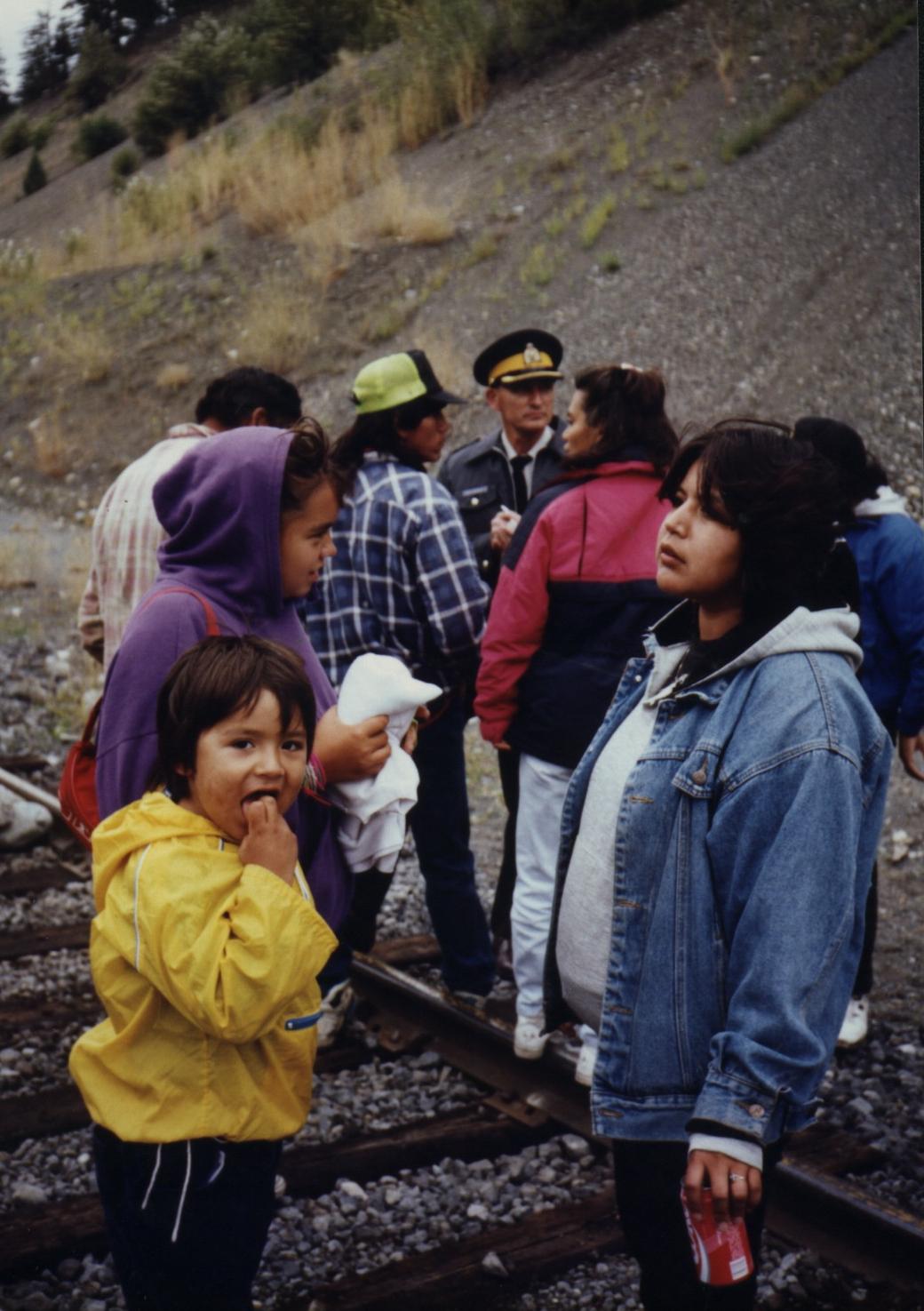
Seton Lake Blockade of BC Rail
In northern Ontario, Anicinabe near Longlac (Long Lake) blocked the Trans-Canada Highway in early August. On August 13 they also blocked Canadian National Rail for about 1 week (costing an est. $2.6 million in lost revenue each day). This blockade was soon followed by blockades on nearby Canadian Pacific railways by the Pic Mobert and Pays Plat bands. When court injunctions were obtained by railway officials, another blockade would be set up by another band.
In mid-August, a railway bridge in northeastern Alberta was set ablaze. In late August, just after hours after RCMP cleared railway at Seton Lake, BC, a fire caused extensive damage to Seton Portage railway bridge.
“Virtually all our transcontinental traffic has been disrupted. We are at the mercy of individual bands & whatever decisions they make” (Entering the War Zone, p. 147).
In early September, after military advances into Mohawk territory, 5 hydro-electric towers were felled in southwestern Ontario. A railway bridge was also set on fire in the same region.
In southern Alberta, Peigan Lonefighters began diverting the Oldman River away from a half-constructed dam. On September 7, dozens of police escorted provincial employees and heavy equipment to repair the dyke which had been breached by the Peigan. Warning shots were fired and a 33-hour standoff occurred.
In the end, the widespread campaign of blockades, sabotage and occupation served to put extreme costs on attempts to evict the Mohawks from their occupation and proved to be very effective in securing their victory to protect their burial grounds and pines.
POWER RESIDES IN THE INFRASTRUCTURE OF THIS WORLD
Shiri Pasternak noted:
“The real role of right wing alarmists in the Idle No More movement: to maintain the economic status quo, because territory is capital. Land is money. And the circulation of goods, resources and energy through territory is the very essence of capitalism today… The fact is that critical infrastructure in Canada is at the mercy of Indigenous peoples, who are more rural than Canadians and have access to important arteries for economic flows: transportation corridors, energy sectors, and sites of natural resource extraction…This vulnerability is deadly to the logistics industry.
Logistics is a business science concerned with the management of goods and information through global supply chains. As the World Bank has declared: ‘A competitive network of global logistics is the backbone of international trade’…For an industry dependent on maintaining open channels for capital circulation, a blockade means massive losses: the trucking industry alone is worth $65 billion dollars and employs over 260,000 drivers.”
The police even attested to this point:
-Chris Lewis, commissioner of the Ontario Provincial Police

An analysis of supply chain capitalism is necessary to understand the condition of Earth today and the dilemmas it faces. Supply chain capitalism refers to commodity chains based on subcontracting, outsourcing, and allied arrangements in which labor, capital and nature are mobilized in fragmented, but linked economic niches. Such supply chains connect seemingly independent entrepreneurs through expansive transportation infrastructure, making it possible for commodity processes to span the globe. Known in industry terms such as Toyotism or Just-in-time Production (JIT), this is the nature of the modern economy. Each particular flow in a supply chain is a moment of the overall reproduction of capitalism and its society. To physically block these flows of commodities, is to attack the system as a whole, for most of what accounts for global commodity production is submitted to the logic of circulation. Everything is oriented around continuous movement and anything not in circulation cuts profits, it is a sitting waste. From the perspective of those that blockade, this emphasis on the quick and never ending flow of commodities multiplies a blockages power.
Pipelines are one of many components of critical infrastructure. Because of the volume of product (gasoline, natural gas, crude oil) they transport, they are a vital part of the capitalist economy and it’s why during war, they are often subject to attack. Since World War II, the Air Force has been developing the idea of “infrastructure warfare,” seeing civil and industrial infrastructure (bridges, railroads, pipelines, etc) as valuable targets for bringing its opponents to their knees.
During the Idle No More movement’s January 16th Day of Action, Indigenous demonstrators stopped passenger railway traffic lines between Toronto, Ottawa and Montreal. Others stalled major highways and rail lines in parts of Alberta, New Brunswick, Ontario, and Manitoba, including Portage la Prairie, which a CN Rail spokesman described as a “critical link” in its network (do your homework: maximize damage/risk). Demonstrators also gathered in Windsor, Ontario at the Ambassador Bridge to Michigan, shutting down traffic through North America’s busiest border crossing for trade between Canada and the U.S. with 10,000 trucks on average passing daily. These anti-infrastructural actions suggest a conscious link between resitance to threatened lands and blockage of circulation.
Supply chains are vulnerable: every supply chain is now reaching such a level of specialization that if one of them disappeared that would be enough to paralyze the whole chain. In the absence of standing inventories, a blockade of just a few days could effectively paralyse several production sites and retailers. The economic cost of even a week of such co-ordinated efforts spread across the so-called United States would be crippling and impossible to control given current police and military resources. There is no railroad terminal, port, or trucking distribution facility without the oil infrastructure used to power the train engines, trucks and barges. Inversely, there is no way to build pipelines without the railroad terminals, trucks and production facilities used to forge or transport pipeline equipment.
As we have seen with the Oka Crisis and several other indigenous rebellions, blockades can help leverage negotiating power for Indigenous people over their lands. When planned strategically, blockades can physically block the shipments of vital materials for the specific mega-infrasture projects that call so many people into resistance. As was earlier noted, a large shipment of frac proppants was blocked in Olympia for six days,

Not only can blockades “shut down the world”, they also open up space for a new one to be built, or in the case of colonized peoples, a world restored. We can look to many of the indigenous blockades or occupations of the last several decades for the
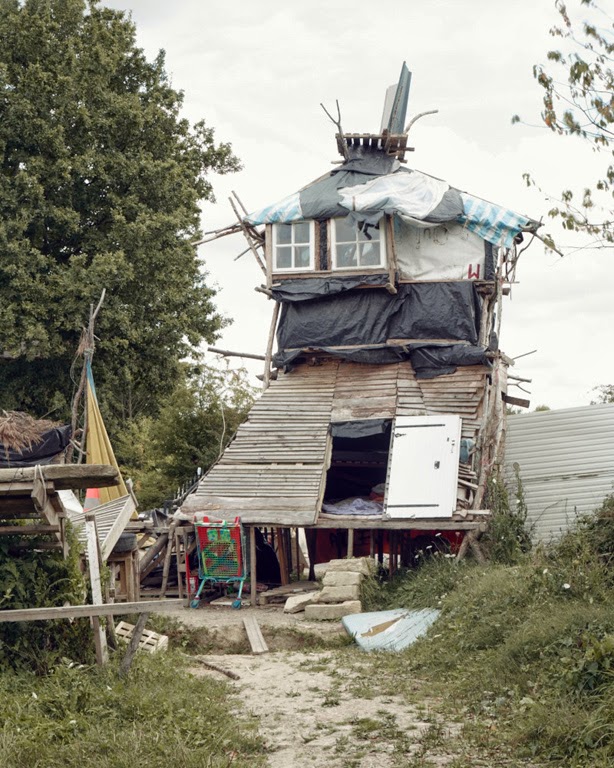
Lookout tower at La ZAD (Notre-Dame-des-Landes)
>We hold evident that blockades are a crucial tactic in our war against planetary annihilation.
Be Safe. Get Going.
Petropolis is an interactive map that documents the oil pipeline infrastructure throughout North America with particular attention paid to the Chicagoland area. The map serves as a valuable research in locating possible targets and shows the type of research that local struggles could engage in.
Much of the analysis in the “Power Resides in the Infrastructure of the World” section is owed to (if not directly plagiarized) from the chapter “Power is Logistical, Block Everything!” in Invisible Committee’s book, “





